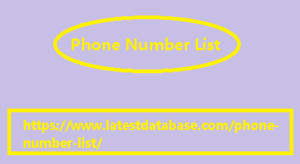Inside sales positions are a cornerstone of many businesses. Offering a dynamic and rewarding career. Path for those who enjoy engaging with customers. Building relationships, and driving revenue from within the office. Unlike traditional outside sales roles, which require frequent travel and face-to-face meetings. Inside sales professionals primarily use phones. Emails, and online communication tools to connect with clients. This guide will delve into the world of inside sales. Covering the key aspects of the job, necessary skills, and tips for succeeding in this field.
1. Understanding Inside Sales
1.1 What is Inside Sales?
Inside sales is the process of selling products or services remotely. Moreover, typically from an office environment. Inside sales representatives (ISRs) use a variety of tools—such as phone calls, emails, video conferencing, and social media—to reach potential customers, qualify leads, and close deals. Unlike outside sales, which involves direct interaction with clients at their location, inside sales professionals conduct their business primarily over the phone or through digital communication channels.
Inside sales is a rapidly growing field, especially with the rise of technology and remote work. Companies across various industries, from software and technology to Cayman Islands Phone Number List healthcare and finance, are increasingly relying on inside sales teams to drive revenue and manage customer relationships.
1.2 The Evolution of Inside Sales
The concept of inside sales has evolved significantly over the years. Traditionally, sales were divided into two categories: inside sales and outside sales. Outside sales involved fieldwork. Moreover, with sales reps traveling to meet clients in person. Inside sales, on the other hand, was viewed as a support function for outside sales, primarily handling smaller accounts or inbound inquiries.
However, with advancements in technology and changes in customer behavior, inside sales has become a critical part of the sales strategy for many companies. The ability to America Cell Phone Number Data Address reach a larger audience, lower costs, and improve efficiency has led to the growing importance of inside sales roles.
2. Key Responsibilities of Inside Sales Positions
2.1 Lead Generation and Prospecting
One of the primary responsibilities of an inside sales representative is lead generation. This involves identifying potential customers, often referred to BTC Email List as prospects, who may be interested in the company’s products or services. Inside sales reps use various methods to find leads, such as online research, cold calling, and networking.
Prospecting is a crucial part of the sales process, as it sets the foundation for the sales pipeline. ISRs must be skilled in identifying the right prospects, understanding their needs, and determining whether they are a good fit for the company’s offerings.
2.2 Qualifying Leads
Once leads are generated, the next step is to qualify them. Not all leads will be ready to buy, so it’s the inside sales rep’s job to determine which prospects are worth pursuing further.


